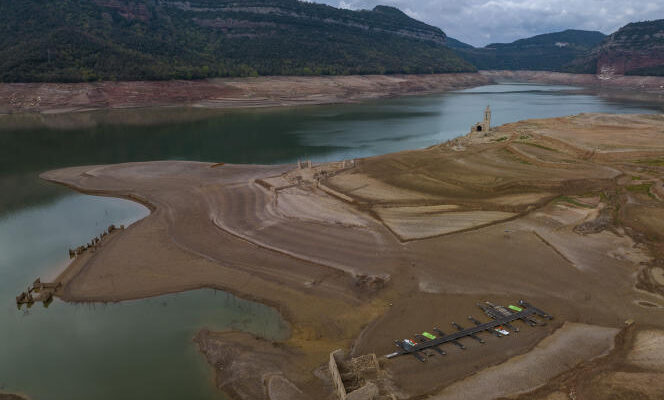The Urgell irrigation canal, located in the Catalan province of Lérida, in northern Spain, will only have remained open for a month. On Friday April 21, the community of irrigators of this hydraulic infrastructure which transports the waters of the Segre to neighboring municipalities and which makes it possible to water 50,000 hectares of fields and orchards decided to close the valves, which opened on March 27.
“We must reserve the water that remains in the two dams connected to the Segre for the 120 municipalities, the 2,000 livestock farms and the 300 industries that depend on them, waiting to see if it finally rains, explain to World Amadeu Ros Farré, president of the Urgell Canal Irrigators Community. This means that we will have to sacrifice 9,000 hectares of alfalfa and that we will not be able to sow the planned 7,000 hectares of maize. We have water reserved for drip irrigation of fruit trees, mainly apple and pear trees, so that they do not die. Hopefully that will be enough…”
From memory, never, according to the 66-year-old farmer, had he been “so dry” for so long. It has now been more than thirty-one months – two and a half years therefore – that Catalonia has been suffering from a drought which is only accelerating: since the meteorological registers have existed, that is to say 1905, this is the longest period without rain.
230 liters of water per inhabitant per day
On November 21, 2022, when the level of the Catalan dams fell to 33%, the entire Ter-Llobregat basin – the two main rivers that supply Barcelona – and that of Darnius-Boadella, on which Girona depends, were placed in drought alert phase. Water restrictions have been decreed for more than 6.6 million inhabitants, i.e. 85% of Catalans, both for agriculture (by 25%) and for industry (5%) or the watering of parks and gardens. “The inhabitants will not notice them, there will be no water cuts, and drinking water is guaranteed for more than a year”, then assured the regional minister for climate action, agriculture and food, Teresa Jorda.
On February 28, the Catalan government finally decreed the “exception” phase, the last before activating the “emergency” phase, which does provide for water cuts. The director of the Catalan Water Agency, Samuel Reyes, admitted that if it does not rain, it will be necessary to consider at least from September drops in the pressure supplied to the network. Even time cuts. For now, the restrictions have increased to 40% for agriculture, 30% for livestock and 15% for industry. It is forbidden to water private and public gardens, and street cleaning cannot be done with drinking water. Town halls are forced to limit water to 230 liters per inhabitant per day, commercial and economic use included, under penalty of fines. The regional government retains the right to expropriate wells and water sources.
You have 48.81% of this article left to read. The following is for subscribers only.
